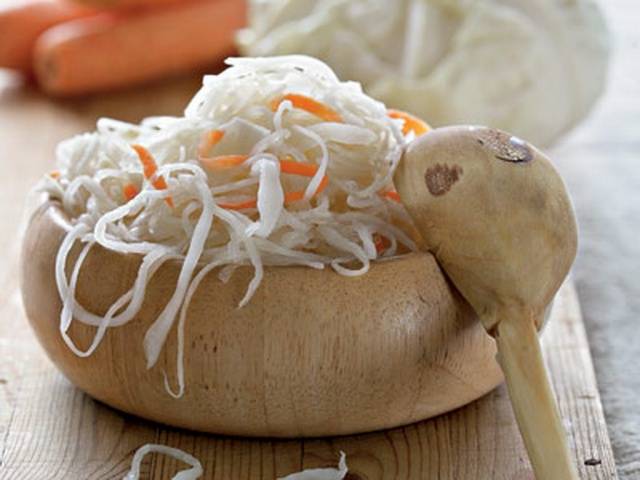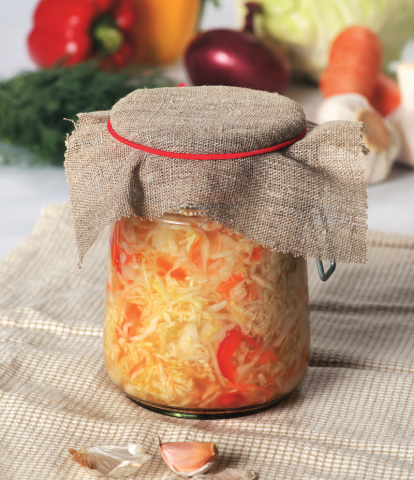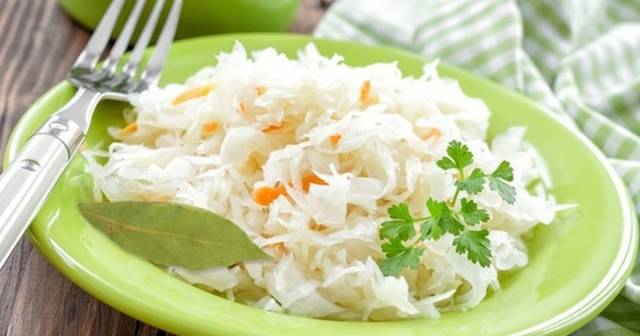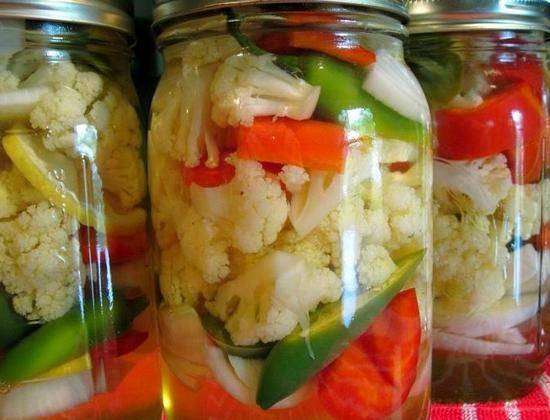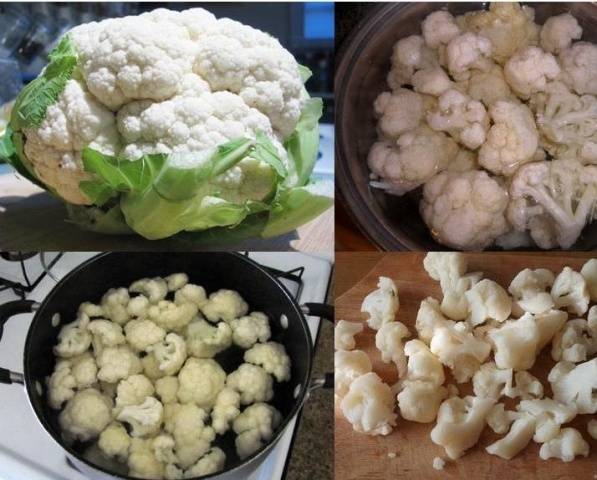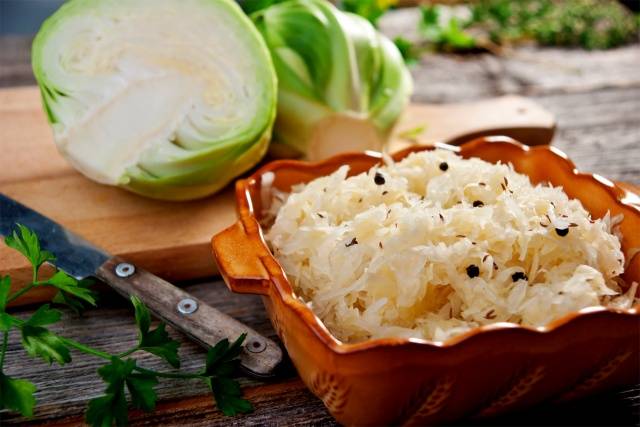Content
Not every young housewife knows about how to salt cabbage for winter. But half a century ago, cabbage was fermented, salted and pickled whole barrelsto feed seven cabbage soup, dumplings and pies with healthy and crispy filling until spring. Salted cabbage retains almost all vitamins and minerals that are found in fresh heads of cabbage. It is not surprising that they continue to pickle cabbage in our time, because it is very healthy, aromatic and tasty.
About, how to pickle cabbage for the winter, how to choose the right heads of cabbage and spices, as well as some of the secrets of pickling and pickling cabbage, you can learn from this article.
Salting cabbage for the winter: preparation
The salting process is quite simple, but there are also some tricks and features that a good housewife should know:
- First of all, you need to distinguish pickled cabbage from salted or sauerkraut. Than salty it will be brine, the faster the product will cook, and the longer it can be stored ready-made. In the process of pickling or pickling, products ferment more strongly, more carbon dioxide is released. These recipes require less salt and may take about two weeks to fully cook. Salted cabbage will be ready in a few days. During the cooking process, carbon dioxide will also be produced, but in smaller quantities. Due to the large amount of salt, bacteria and microorganisms will not be able to exist in the brine - the product will be stored for a long time.
- The taste of salted cabbage is in no way inferior to sauerkraut - it is the same crispy, with a sweet and sour aftertaste and excellent aroma. To make the cabbage even juicier and crispier, experienced housewives do this: half of the head of cabbage is cut into small pieces, and the second part is chopped into larger pieces. As a result, small straws let out the juice, which is necessary for the brine, and large pieces give crunchiness.
- For salting cabbage for the winter, large and tough white heads of cabbage are chosen. A vegetable of late varieties is most suitable for such purposes.... The upper leaves of a green tint must be removed from the heads of cabbage. You need to carefully choose a product for salting: the head of cabbage should be elastic, but not tough (this is often the case with Chinese varieties of white cabbage).
- You can cut heads of cabbage with a knife, special shredders, use food processors and other devices. The main thing, so that most of the head of cabbage is chopped into small strips - it is they who will give the juice, because the cabbage should ferment in its own juice.
- So that there is no bitterness in the finished product, it is necessary remove carbon dioxide from brine daily... For this, the cabbage mass is pierced in several places with a narrow knife or wooden stick.
- After cooking, the cabbage is tamped tightly and pressed with something heavy. This must be done in order for the cabbage to start up the juice. If the next day the entire product is not covered with brine, you need to replace the press by choosing something heavier.
The most important thing in salting cabbage for the winter is to remove the press in time and transfer the product to the refrigerator. Finished cabbage should be moderately crunchy, juicy and slightly sour. If the brine is fermented, the pickles will become sluggish, not crunchy and tasteless.
Several ways to pickle cabbage
As already mentioned, salting cabbage for the winter is a simple matter. You don’t need to be a super chef, you don’t need exotic products for cooking. All that is needed for the simplest recipe is a head of cabbage, carrots, spices.
Of course, there are more interesting ways with an unusual salting, coloring cabbage with beet juice, some housewives take not simple heads of cabbage for pickling, but heads of cauliflower. All this is a matter of taste, as there are so many chefs and opinions. To choose the best recipe, you have to try at least a few.
Traditional recipe for pickling cabbage
This is how our grandmothers salted a white-cabbage vegetable. The finished product can be used as a filling for pies or dumplings, added to cabbage soup, or eaten as an independent dish.
For cooking you will need:
- 2 heads of cabbage, medium size;
- 6-7 medium carrots;
- 4-5 tablespoons of salt.
Experts recommend using Himalayan salt for salting, which can still be replaced with extra coarse gray rock salt. Before preparing the brine, such salt must be grinded with a manual or electric coffee grinder.
The entire cooking process consists of several steps:
- Wash, peel and grate the carrots.
- Wash the cabbage too, remove the top leaves from the heads of cabbage. First, chop half of one head of cabbage into small strips. The other half of the head of cabbage is cut into larger pieces. Leaving a few leaves uncut can delay the acidification of the brine to make the cabbage crisp.
- Pour the chopped cabbage into a basin and crush it with your hands so that it becomes juicy, but still crispy - here, the main thing is not to overdo it.
- Now half of the grated carrots are poured here and two tablespoons of salt are added, everything is thoroughly mixed with your hands. Spread the resulting mixture in a saucepan, tamping well.
- Now you need to do the same with the second head of cabbage. At the end, put the cabbage in a saucepan and tamp it as well. The mass should significantly decrease in volume - this means that the cabbage is sufficiently well crumpled and lets out juice.
- Now you need to take a plate, cover the cabbage mass with it and press down with a load. You can use a three-liter can of water as a load, for example.
- Every day, the cabbage mass should be pierced in several places to release carbon dioxide and ferment faster.
- If the room is warm, the product will be salted in 2-3 days, at a cooler temperature it will take about five days. When the product is ready, you can transfer it to glass jars and put it in the refrigerator. Do not fill the jars to the top, the cabbage may still ferment, the juice will spill over the edge of the container.
You can eat pickles the next day. In the refrigerator, salted cabbage can stand all winter without losing its crispness and aroma.
Cabbage for the winter with dill grains
The cabbage made according to this recipe has a strong spicy aroma and special crunchiness. And also The "chip" of the recipe is a special cutting of the product - shredding in long narrow strips, similar to spaghetti.
You need to prepare the following ingredients:
- 2 medium forks of white cabbage;
- 3 small carrots;
- 2.5 tablespoons of salt;
- a spoonful of dried dill seeds.
You need to cook a dish according to this recipe like this:
- Wash and clean all ingredients.
- Cut each head of cabbage into two unequal parts so that a stump remains in one half.
- Lay half of the fork flat or upright and chop into long, narrow strips. The place around the stump should not be cut, the fibers there are too coarse.
- Put the shredded cabbage in a wide bowl or saucepan and mash it well with your hands. Before that, you need to add salt.
- Then pour the carrots grated on a coarse grater and sprinkle the dill seeds. Mix everything well with your hands.
- Cover the pot with cabbage with a plate and press it down with a load. Salt the product in a cool place with good ventilation. A balcony or veranda is perfect for these purposes.
- Twice a day it is necessary to remove the load and stir the mass with a spoon to free the brine from excess carbon dioxide.
- After three days, the cabbage will be ready, it can be laid out in glass banks and put it in the refrigerator or basement.
How to salt cauliflower
How many recipes exist for salting white cabbage, but cauliflower, for some reason, pay much less attention. Completely in vain, because colored varieties are much healthier, and such cabbage tastes just as good as white cabbage.
For salting, white inflorescences are chosen, dense and elastic. If the shade of the heads of cabbage is yellowish, it means that they are overripe and not suitable for salting. It is recommended to cut carrots for brine into long strips or grate on a special grater for Korean carrots - this way the dish will look more beautiful and spectacular.
So, you need the following ingredients:
- colored heads of cabbage - 2 pieces;
- 500 g carrots;
- 5 cloves of garlic;
- a few peas of black pepper;
- 4 bay leaves;
- a tablespoon of salt with a mountain;
- an incomplete spoonful of sugar.
The preparation will be as follows:
- The brine is prepared first. To do this, dissolve salt and sugar in a liter of water, bring the brine to a boil. After that, it needs to be cooled.
- The heads of cabbage are divided into small inflorescences and dipped in boiling water for a few minutes (blanch).
- After that, the inflorescences are immersed in cold water so that they cool down and do not lose their crispness. Place in a large saucepan in neat layers.
- Each layer of cabbage is interspersed with grated carrots, finely chopped garlic, pepper and bay leaves. The bottom and top layers should be carrot.
- Pour everything with brine and press down with a load. For 2-3 days, cauliflower is salted in a warm room, then taken out to a cool place (balcony, loggia, veranda). After another couple of days, you can transfer the mixture to jars and put it in the refrigerator for the whole winter.
Salted cabbage according to this recipe is not a shame to treat even the most fastidious guests, it looks like an appetizer or salad and looks very beautiful on a winter table.
Outcomes
Salted cabbage is very useful for the body, especially for immunity weakened by cold weather. The acidic product will compensate for the lack of enzymes in the intestines, saturate the body with valuable vitamin C, remove bad cholesterol, and restore the functioning of the stomach with the help of fiber.
So that, salt the cabbage right and all winter we enjoy a healthy and aromatic snack! More details about the salting process can be found in this video:


